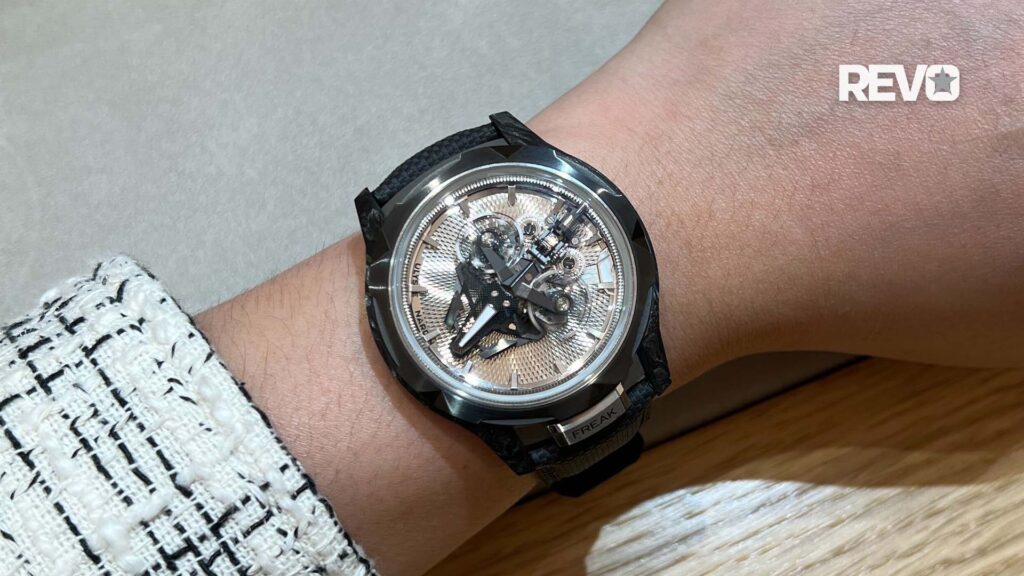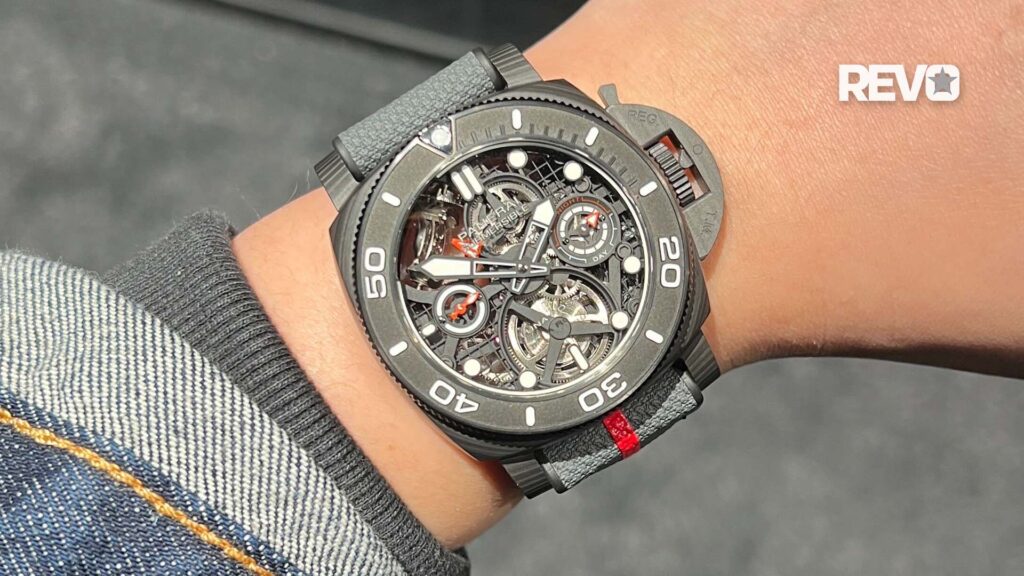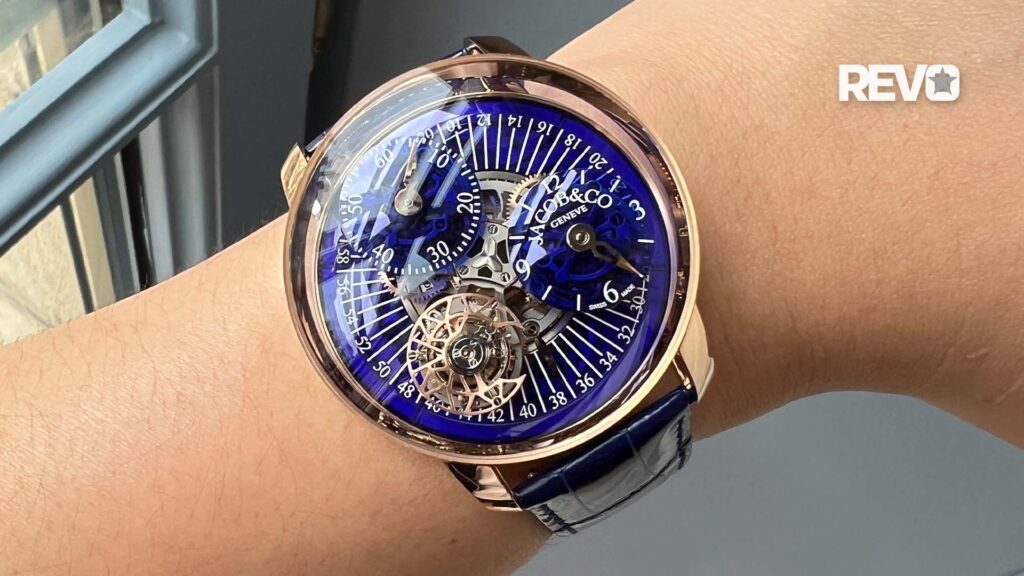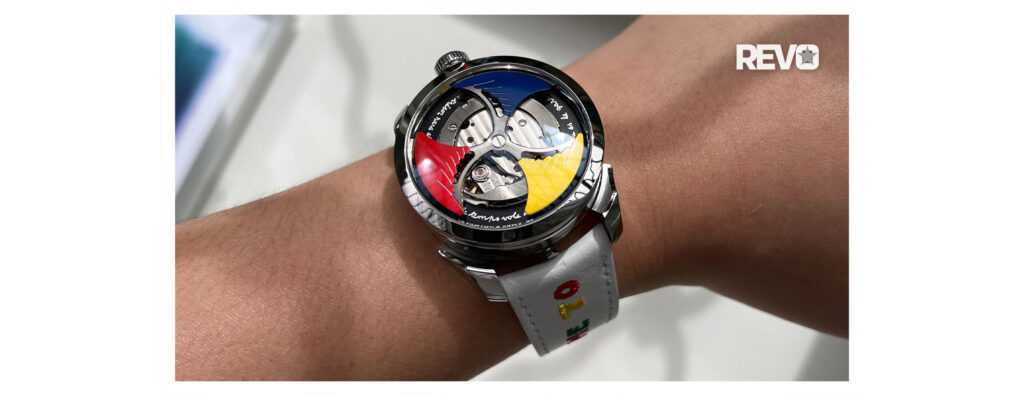News
Episode 1: A New Legacy
MB&F’S NEW LEGACY MACHINE NO. 1
“These are the days of miracle and wonder”
— Paul Simon, ‘The Boy in the Bubble’
The only thing about the Legacy Machine No. 1 that concerns Maximilian Büsser, really, is the fact that it’s vintage-looking, just when the wave of vintage-looking watches is at its peak. What if people think that he’s jumping on the bandwagon? Or that he’s catering to Asian markets, with their reputed penchant for classically styled timepieces? For Büsser, who has never made any bones about going his own way, regardless of market clamor, this is a troublesome concept.
Then again, there’s rarely any basis for MB&F to be accused of copycat intentions, or pandering to consumers. The truth of it is that Büsser first sketched out the LM1 in late 2007, recognizable from the very first with its hovering balance wheel and two round dials. As any observer of the industry will probably tell you, the heritage-seeking, back-to-fundamentals watch aesthetic only really took hold a couple of years after that.
Which is not to say that the Legacy Machine No. 1 is by any means a watchmaking anachronism from the 19th century, Lazarus-ed into being by MB&F for a triumphant comeback tour. Because you see the immediate cues — the glossy white dials and Roman numerals, the 14mm screwed balance beating at a languid 2.5Hz, the cambered dial crystal, the large jewels set in polished gold chatons — juxtaposed with the floating balance wheel, the hyper-real refinement of the finish, and the double-headed Grendizer battle axe on the winding crown. If the Legacy Machine No. 1 is an anachronism, it’s one that was made in a Donnie Darko universe tinged with the eternal return of Nietzschean metaphysics, poised somewhere high up on the asymptote to the axis of perfection.
 My first encounter of the LM1 was of its reverse, as Max Büsser presented it, saving the jaw-dropping obverse for last in his unerring instinct for dramatic flair. The movement, finished to Kari Voutilainen’s flawless standards, was so captivating as to completely obscure the absence of the escapement. As a matter of fact, when Voutilainen was asked about the most difficult part of designing this watch, his answer was that it was designing a movement that could be beautiful even without the emotive charge of a visible regulating organ. “He ended up designing something so beautiful that you forget there’s no balance wheel,” Büsser said.
My first encounter of the LM1 was of its reverse, as Max Büsser presented it, saving the jaw-dropping obverse for last in his unerring instinct for dramatic flair. The movement, finished to Kari Voutilainen’s flawless standards, was so captivating as to completely obscure the absence of the escapement. As a matter of fact, when Voutilainen was asked about the most difficult part of designing this watch, his answer was that it was designing a movement that could be beautiful even without the emotive charge of a visible regulating organ. “He ended up designing something so beautiful that you forget there’s no balance wheel,” Büsser said.
There is, of course, a balance wheel. It’s simply — as if anything about executing this timepiece could be described as “simple” — on the other side of the baseplate. The balance wheel, hairspring, anchor and escape wheel are extruded through the baseplate, with the escape pinion left in its conventional position as point of contact with the fourth wheel. The result, as seen through the dial-side crystal, is the almost magical-seeming balance wheel that hangs suspended from a cantilevered double-arched bridge like an extraterrestrial visitor from the pages of an H. G. Wells novel. The rest of the assortment cleaves close to the dial, the low-lying giveaway to this horological conjuration.
The twin white lacquer subdials are ostensibly for the display of two separate time zones. Overshadowing their functional aspect, however, is their symbolic significance of continuing with the double-dial aesthetic that has defined every other timepiece from the brand. In a sense, the Legacy Machine No. 1 is the recipient of a bequest of design and philosophy from the Horological Machines, which is ironic, given that the LM1 is meant to embody Büsser’s creative force as filtered through an era in which none of the Horological Machines could have existed. As a prequel — and the LM1 is, essentially, a prequel to the HMs, being made after but set a full century before them — it comes dangerously close to the Platonic ideal. George Lucas ought to have taken some valuable pointers from the MB&F playbook. Imagine the possibilities. Jar Jar Binks might never have been foisted upon
this unhappy world.
With the Legacy Machine No. 1 being what it is and coming from where it does, its second time zone is not merely adjustable to the hour, as you would get with the majority of GMT timepieces on the market. It’s not even adjustable to the half- or quarter-hour, as some finer examples of such watches are. The second time zone on the LM1 is adjustable to the minute and second, and runs off the same regulator as the other dial indication (Theoretically, albeit impractically, it’s adjustable down to a fifth of a second, as the balance oscillates at 2.5Hz.) With such flexibility in the second time display, we now leave the prosaic realms of second time zones behind. After all, “you can also use it as a stopwatch,” says Büsser. Or it could very well represent time in a parallel world, in which civil time always runs 10 minutes slower than it does in this one; a world in which I wouldn’t have missed this morning’s train. There is a theory about the non-linearity of time, which posits that the past, present and future are all happening at once, and that the only reason human beings are unable to experience this is because we are restricted by our three-dimensional nature. If the human race ever became aware of time as scalar instead of vector, possibly the only watch we’d ever wear would be the Legacy Machine No. 1.
The peerless finish of the movement is thanks to the expertise and stratospheric standards of independent watchmaker Kari Voutilinen, whose name is engraved on the bridge supporting the center wheel, along with that of Jean-François Mojon, who designed the movement
As if it didn’t have enough up its sleeves already, the LM1 also has a world’s first as a trump card — its vertical power reserve indication is, according to Büsser, unique among all wristwatches. The gear train which transmits information about the state of wind of the mainspring is coupled to a differential which transforms its horizontal motion to a perpendicular plane. The resultant action is displayed via the verticalized arc described by a steel lever, and the power reserve indication read off the flame-blued tip of the lever against a curved scale which projects off the sunray-brushed dial. The main issue with this, as it is in most things watchmaking-related, is one of maintaining the appropriate level of energy. The lever — indeed the entire power reserve mechanism — must be sturdy enough to overcome gravitational force at various positions, and that takes considerably more power than the standard power reserve displays of most other timepieces, which consist of a relatively simple gear train coupled to a slender hand. It’s no small matter, as any energy-guzzling complication eventually affects the amplitude of the balance, which is crucial to the fundamental timekeeping aspect of a timepiece. With the vulnerability inherent in the LM1’s floating balance wheel, one might think the development team would have left well enough alone, instead of messing around with (arguably unnecessary) vertical power reserves. Of course, this doesn’t seem to have daunted Jean-François Mojon, the man behind the LM1 movement, who is also responsible for such acts of horological audacity as the Harry Winston Opus X and de Grisogono’s Meccanico. The power reserve arches off the dial with effortless aplomb, literally and metaphorically meeting the magnificent balance wheel halfway. This is how Büsser is able, during presentations, to point out how harmoniously the different elements of the dial work together, how the power reserve display resembles a marine sextant, an oil rig — to be honest it could resemble any damn thing he likes, because it’s when things work beautifully (as this does) that you can start building worlds both real and imaginary upon them.
When talking about the origins of the Legacy Machine No. 1, Büsser frequently brings up the 19th-century World’s Fairs — one of the few large-scale events in a time before mass media that “allowed people to dream and experience awe”. Countries would come to the World’s Fair and take up pavilions and exhibit their latest inventions and technological advancements to the admiring hordes; the first locomotives would have been presented there. To paraphrase Miranda, the wide-eyed protagonist from Shakespeare’s tale of exploration and discovery, The Tempest, “O brave new world, that has such creatures in it!”
And so, with the Legacy Machine No. 1 in our hands, say we.











